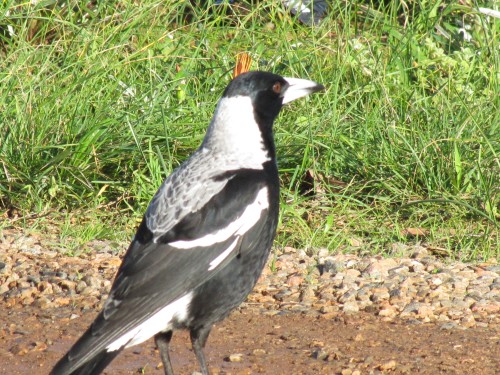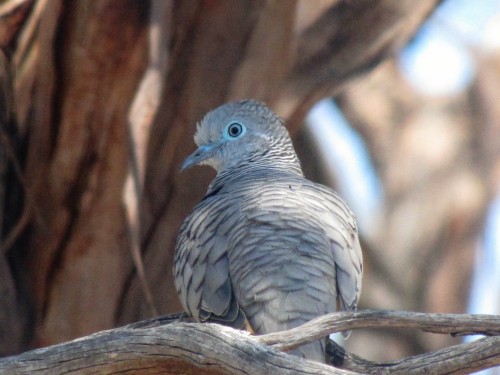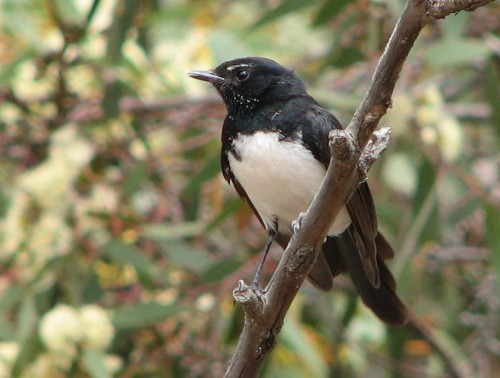Happy Christmas
HAPPY CHRISTMAS to all of my readers.
I watched the news this evening and saw that terrible weather conditions are being experienced by many people around the world. From storms, heavy rain, blizzards, to deep snow and heat waves. Our own South Australian capital city, Adelaide, had the highest temperature of all the cities of the world: 41.3C (106F). I live only 80km south east of Adelaide and it was very hot here too – around the same temperature; it may have just touched 42 for a while. Except for a trip to church early in morning, I stayed indoors in air-conditioned comfort. Thankfully, cooler weather and rain is forecast for later in the week.
Birds in hot weather
Yesterday I wrote about the importance of regularly providing fresh water for the birds in your garden, especially in the type of hot weather we experience in summer here in Australia. They really appreciate it, and this provides opportunities for the avid birder to watch them through a nearby window without disturbing them in any way.
Because of the hot weather, I was reluctant to get out and about. Despite the heat, I was aware of some of the species outside. Some of our birds have loud calls, and we had a very quiet Christmas with no visitors. Several times I heard Peaceful Doves calling, and there was the persistent call of a baby Red Wattlebird just out of the nest. Through one of our windows I saw our resident Willie Wagtails a few times, and this evening, when I briefly braved the elements, I disturbed a small flock of Galahs from one of our trees.
The resident Australian Magpies came frequently for a drink at the bird bath, and earlier this morning I observed a loose flock of about 25 Little Ravens flying overhead. The resident House Sparrows kept in the shade for most of the day, coming to the water in the birdbaths frequently. We usually hear the noisy and gregarious New Holland Honeyeaters, but they were rather subdued today. So were the Spiny-cheeked Honeyeaters and the White-plumed Honeyeaters. I also briefly heard the small family of Superb Fairy-wrens which occupy the bushy parts of our property.
I just checked the weather radar; there are storms on the way. Tomorrow I must get outside a few times and keep a look out for Swifts; just their kind of conditions.
Once the weather cools a little, I hope to get out and about a few times. It is about time I took some more photos to share here.
In the meantime, I hope that you have a wonderful Christmas wherever you are, and whatever the weather.
Good birding,
Trevor
White-fronted Honeyeater
I apologise for the poor quality of the above photo. I only had a few seconds to take it before the bird flew away, not to return. If it does, and I get a better shot, I’ll replace it.
This morning was very hot. It reached 45C (113F) just before lunch time, with a strong, hot northerly wind blowing up dust everywhere. Not a pleasant day by any measure.
New Home Block species
Despite the atrocious conditions I was able to add a new bird species to my home block list, a juvenile White-fronted Honeyeater. I had previously seen this species less than a kilometre away on several occasions, so it seemed inevitable that I’d record it here someday. Today was that day. It brings my home list to 110 species; adding new species doesn’t happen often these days.
Distribution of White-fronted Honeyeaters
This species is widespread throughout inland Australia west of the Great Dividing Range. It is absent throughout the northern parts of Western Australia, Northern Territory, Queensland as well as the south-western tip of western Australia, southern Victoria and Tasmania. Here in Murray Bridge is near the southern-most part of South Australia it can be found. It can occur in the Coorong area and once I saw one bird near Lucindale in the south east of the state.
Habitat and breeding
The White-fronted Honeyeater prefers dry inland scrubs, mallee and eucalypt woodlands. It usually breeds in the latter half of the year but will also respond to rain and breed at other times. The one I saw was an independent juvenile. It probably fledged sometime in the last two months.
Normally they lay 2-3 eggs in a cup shaped nest comprised of bark, grass, or spider’s web and is usually located low in a bush or even on the ground.
Reference:
Pizzey, G and Knight, F, 1997, The field guide to the birds of Australia, Sydney, Angus and Robertson.
Magpies in the heat
Yesterday we had the hottest day of this summer so far. It reached 45C under our front veranda – that’s 113F for those of you who use that temperature scale.
It was hot.
Very hot.
Apart from needing to go to the Post Office early in the morning I stayed indoors all day. The evaporative air conditioner chugged away nicely from late morning until well into the evening. One aspect of this form of cooling is that you need to keep a few windows partially open to keep the flow of air moving. We often open the sliding door shown in the photo above a few centimetres. It wasn’t long before the resident magpie family found the lovely cool air coming from the house.
Earlier they had been enjoying bathing in the bird bath, but this was even better evidently. At one stage I noticed six birds taking advantage of the cool air. It will be interesting if other species follow suit on the hot days still to come.





